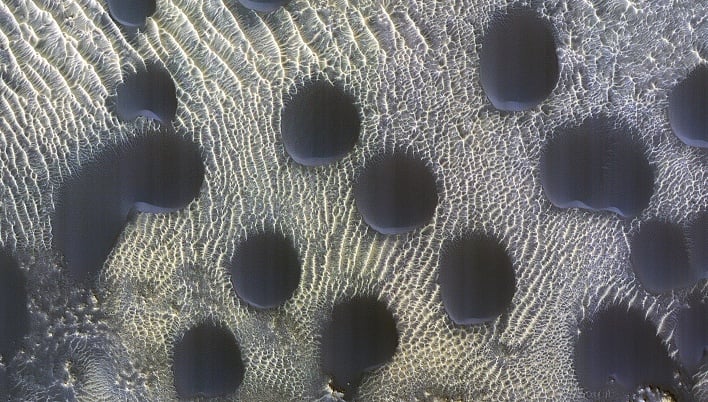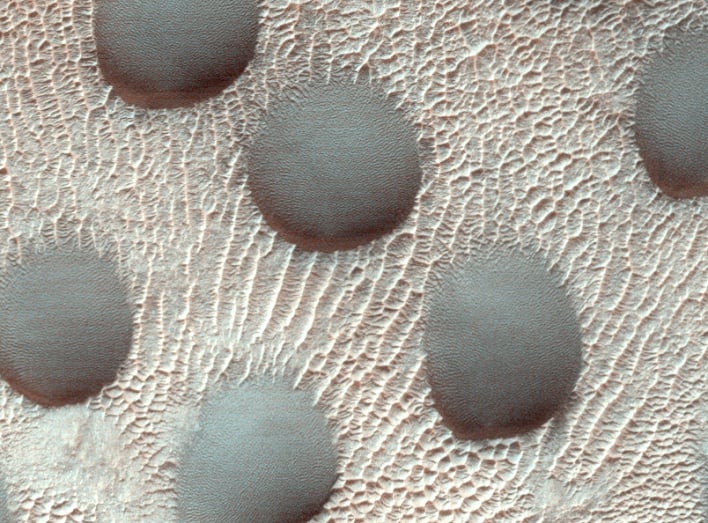Scientists Are Mesmerized By These Unusual Circular Sand Dunes On Mars

The images were captured by the High Resolution Imaging Science Experiment (HiRISE), which is one of six instruments onboard MRO. The camera is operated by the University of Arizona, in Tucson. The HiRISE camera is capable of imaging up to 30 centimeters per pixel, making it ideal for studying the surface of Mars. The recent images released by NASA show how frost disappears in the late winter. The image at the top was taken at a latitude of 42.505 degrees and a longitude of 67.076 degrees, on November 22, 2022.
The sand dunes captured in the images are slightly asymmetrical, with steep slip faces on the south ends. These features indicate that the sand moves toward the south, but the winds may vary, according to a blog post by the University of Arizona.

The location shown in the images is just one of 60 sites on the Red Planet that is being monitored by HiRISE. The collection of images has given scientists the ability to observe how quickly the sand dunes move. The data has revealed that sand dunes from the equator to the poles are moving at a rate of up to 3.3 feet (1 meter) per Martian year.
Even though the primary mission of MRO was completed in 2010, the spacecraft continues to extend its value.

